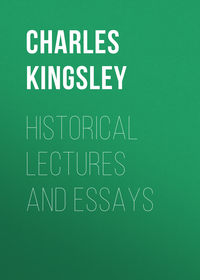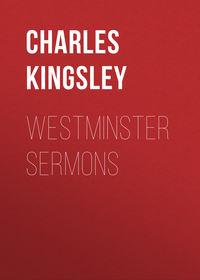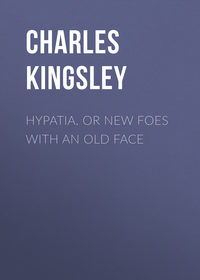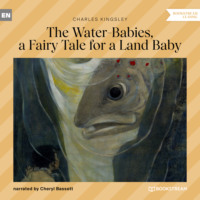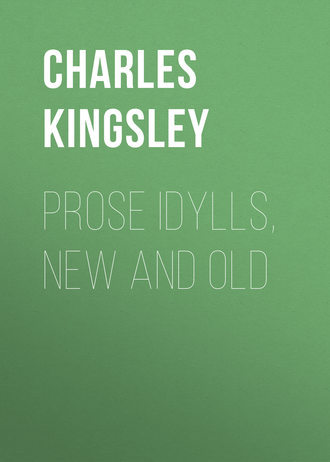 полная версия
полная версияProse Idylls, New and Old
His tie is simple enough. A pale partridge or woodcock wing, short red hackle legs, a peacock-herl body, and a tail—on which too much artistic skill can hardly be expended—of yellow floss silk, and gold twist or tinsel. The orange-tailed governors ‘of ye shops,’ as the old drug-books would say, are all ‘havers;’ for the proper colour is a honey yellow. The mystery of this all-conquering tail seems to be, that it represents the yellow pollen, or ‘bee bread’ in the thighs or abdomen of the bee; whereof the bright colour, and perhaps the strong musky flavour, makes him an attractive and savoury morsel. Be that as it may, there is no better rule for a chalk stream than this—when you don’t know what to fish with, try the governor.
4. The black alder (Sialis nigra, or Lutaria).
What shall be said, or not be said, of this queen of flies? And what of Ephemera, who never mentions her? His alder fly is—I know not what; certainly not that black alder, shorm fly, Lord Stowell’s fly, or hunch-back, which kills the monsters of the deep, surpassed only by the green drake for one fortnight; but surpassing him in this, that she will kill on till September, from that happy day on which
‘You find her out on every stalkWhene’er you take a river walk,When swifts at eve begin to hawk.’O thou beloved member of the brute creation! Songs have been written in praise of thee; statues would ere now have been erected to thee, had that hunch back and those flabby wings of thine been ‘susceptible of artistic treatment.’ But ugly thou art in the eyes of the uninitiated vulgar; a little stumpy old maid toddling about the world in a black bonnet and a brown cloak, laughed at by naughty boys, but doing good wherever thou comest, and leaving sweet memories behind thee; so sweet that the trout will rise at the ghost or sham of thee, for pure love of thy past kindnesses to them, months after thou hast departed from this sublunary sphere. What hours of bliss do I not owe to thee! How have I seen, in the rich meads of Wey, after picking out wretched quarter-pounders all the morning on March-brown and red-hackle, the great trout rush from every hover to welcome thy first appearance among the sedges and buttercups! How often, late in August, on Thames, on Test, on Loddon heads, have I seen the three and four pound fish prefer thy dead image to any live reality. Have I not seen poor old Si. Wilder, king of Thames fishermen (now gone home to his rest), shaking his huge sides with delight over thy mighty deeds, as his fourteen-inch whiskers fluttered in the breeze like the horsetail standard of some great Bashaw, while crystal Thames murmured over the white flints on Monkey Island shallow, and the soft breeze sighed in the colossal poplar spires, and the great trout rose and rose, and would not cease, at thee, my alder-fly? Have I not seen, after a day in which the earth below was iron, and the heavens above as brass, as the three-pounders would have thee, and thee alone, in the purple August dusk, old Moody’s red face grow redder with excitement, half proud at having advised me to ‘put on’ thee, half fearful lest we should catch all my lady’s pet trout in one evening? Beloved alder-fly! would that I could give thee a soul (if indeed thou hast not one already, thou, and all things which live), and make thee happy in all æons to come! But as it is, such immortality as I can I bestow on thee here, in small return for all the pleasant days thou hast bestowed on me.
Bah! I am becoming poetical; let us think how to tie an alder-fly.
The common tie is good enough. A brown mallard, or dark hen-pheasant tail for wing, a black hackle for legs, and the necessary peacock-herl body. A better still is that of Jones Jones Beddgelert, the famous fishing clerk of Snowdonia, who makes the wing of dappled peacock-hen, and puts the black hackle on before the wings, in order to give the peculiar hunch-backed shape of the natural fly. Many a good fish has this tie killed. But the best pattern of all is tied from the mottled wing-feather of an Indian bustard; generally used, when it can be obtained, only for salmon flies. The brown and fawn check pattern of this feather seems to be peculiarly tempting to trout, especially to the large trout of Thames; and in every river where I have tried the alder, I have found the bustard wing facile princeps among all patterns of the fly.
Of palmers (the hairy caterpillars) are many sorts. Ephemera gives by far the best list yet published. Ronalds has also three good ones, but whether they are really taken by trout instead of the particular natural insects which he mentions, is not very certain. The little coch-a-bonddhu palmer, so killing upon moor streams, may probably be taken for young larvæ of the fox and oak-egger moths, abundant on all moors, upon trefoils, and other common plants; but the lowland caterpillars are so abundant and so various in colour that trout must be good entomologists to distinguish them. Some distinction they certainly make; for one palmer will kill where another does not: but this depends a good deal on the colour of the water; the red palmer, being easily seen, will kill almost anywhere and any when, simply because it is easily seen; and both the grizzle and brown palmer may be made to kill by adding to the tail a tuft of red floss silk; for red, it would seem, has the same exciting effect on fish which it has upon many quadrupeds, possibly because it is the colour of flesh. The mackerel will often run greedily at a strip of scarlet cloth; and the most killing pike-fly I ever used had a body made of remnants of the huntsman’s new ‘pink.’ Still, there are local palmers. On Thames, for instance, I have seldom failed with the grizzled palmer, while the brown has seldom succeeded, and the usually infallible red never. There is one more palmer worth trying, which Scotsmen, I believe, call the Royal Charlie; a coch-a-bonddhu or furnace hackle, over a body of gold-coloured floss silk, ribbed with broad gold tinsel. Both in Devonshire and in Hampshire this will kill great quantities of fish, wherever furzy or otherwise wild banks or oak-woods afford food for the oak-egger and fox moths, which children call ‘Devil’s Gold Rings,’ and Scotsmen ‘Hairy Oubits.’
Two hints more about palmers. They must not be worked on the top of the water, but used as stretchers, and allowed to sink as living caterpillars do; and next, they can hardly be too large or rough, provided that you have skill enough to get them into the water without a splash. I have killed well on Thames with one full three inches long, armed of course with two small hooks. With palmers—and perhaps with all baits—the rule is, the bigger the bait the bigger the fish. A large fish does not care to move except for a good mouthful. The best pike-fisher I know prefers a half-pound chub when he goes after one of his fifteen-pound jack; and the largest pike I ever ran—and lost, alas!—who seemed of any weight above twenty pounds, was hooked on a live white fish of full three-quarters of a pound. Still, no good angler will despise the minute North-country flies. In Yorkshire they are said to kill the large chalk trout of Driffield as well as the small limestone and grit fish of Craven; if so, the gentlemen of the Driffield Club, who are said to think nothing of killing three-pound fish on midge flies and cobweb tackle, must be (as canny Yorkshiremen are likely enough to be) the best anglers in England.
In one spot only in Yorkshire, as far as I know, do our large chalk flies kill: namely, in the lofty limestone tarn of Malham. There palmers, caperers, and rough black flies, of the largest Thames and Kennet sizes, seem the only attractive baits: and for this reason, that they are the flies of the place. The cinnamon Phryganea comes up abundantly from among the stones; and the large peat moss to the west of the tarn abounds, as usual, in house-flies and bluebottles, and in the caterpillars of the fox and oak-egger moths: another proof that the most attractive flies are imitations of the real insects. On the other hand, there are said to be times when midges, and nothing else, will rise fish on some chalk streams. The delicate black hackle which Mr. Stewart praises so highly (and which should always be tied on a square sneck-bend hook) will kill in June and July; and on the Itchen, at Winchester, hardly any flies but small ones are used after the green drake is off. But there is one sad objection against these said midges—what becomes of your fish when hooked on one in a stream full of weeds (as all chalk streams are after June), save
‘One struggle more, and I am freeFrom pangs which rend my heart in twain’?Winchester fishers have confessed to me that they lose three good fish out of every four in such cases; and as it seems pretty clear that chalk fish approve of no medium between very large flies and very small ones, I advise the young angler, whose temper is not yet schooled into perfect resignation, to spare his own feelings by fishing with a single large fly—say the governor in the forenoon, the caperer in the evening, regardless of the clearness of the water. I have seen flies large enough for April, raise fish excellently in Test and other clear streams in July and August; and, what is more, drag them up out of the weeds and into the landing-net, where midges would have lost them in the first scuffle.
So much for our leading chalk flies; all copies of live insects. Of the entomology of mountain streams little as yet is known: but a few scattered hints may suffice to show that in them, as well as in the chalk rivers, a little natural science might help the angler.
The well-known fact that smaller flies are required on the moors than in the lowlands, is easily explained by the fact that poorer soils and swifter streams produce smaller insects. The large Phryganeæ, or true caperers, whose caddis-baits love still pools and stagnant ditches, are there rare; and the office of water-scavenger is fulfilled by the Rhyacophiles (torrent-lovers) and Hydropsyches, whose tiny pebble-houses are fixed to the stones to resist the violence of the summer floods. In and out of them the tiny larva runs to find food, making in addition, in some species, galleries of earth along the surface of the stones, in which he takes his walks abroad in full security. In any of the brown rivulets of Windsor forest, towards the middle of summer, the pebble-houses of these little creatures may be seen in millions, studding every stone. To the Hydropsyches (species montana? or variegata? of Pictet) belongs that curious little Welsh fly, known in Snowdon by the name of the Gwynnant, whose tesselated wing is best imitated by brown mallard feather, and who so swarms in the lower lakes of Snowdon, that it is often necessary to use three of them on the line at once, all other flies being useless. It is perhaps the abundance of these tesselated Hydropsyches which makes the mallard wing the most useful in mountain districts, as the abundance of the fawn and grey Phryganidæ in the south of England makes the woodcock wing justly the favourite. The Rhyacophiles, on the other hand, are mostly of a shining soot-grey, or almost black. These may be seen buzzing in hundreds over the pools on a wet evening, and with them the sooty Mystacides, called silverhorns in Scotland, from their antennæ, which are of preposterous length, and ringed prettily enough with black and white. These delicate fairies make moveable cases, or rather pipes, of the finest sand, generally curved, and resembling in shape the Dentalium shell. Guarded by these, they hang in myriads on the smooth ledges of rock, where the water runs gently a few inches deep. These are abundant everywhere: but I never saw so many of them as in the exquisite Cother brook, near Middleham, in Yorkshire. In that delicious glen, while wading up beneath the ash-fringed crags of limestone, out of which the great ring ouzel (too wild, it seemed, to be afraid of man) hopped down fearlessly to feed upon the strand, or past flower-banks where the golden globe-flower, and the great blue geranium, and the giant campanula bloomed beneath the white tassels of the bird-cherry, I could not tread upon the limestone slabs without crushing at every step hundreds of the delicate Mystacide tubes, which literally paved the shallow edge of the stream, and which would have been metamorphosed in due time into small sooty moth-like fairies, best represented, I should say, by the soft black-hackle which Mr. Stewart recommends as the most deadly of North-country flies. Not to these, however, but to the Phryganeæ (who, when sticks and pebbles fail, often make their tubes of sand, e.g. P. flava), should I refer the red-cow fly, which is almost the only autumn killer in the Dartmoor streams. A red cowhair body and a woodcock wing is his type, and let those who want West-country trout remember him.
Another fly, common on some rocky streams, but more scarce in the chalk, is the ‘Yellow Sally,’ which entomologists, with truer appreciation of its colour, call Chrysoperla viridis. It may be bought at the shops; at least a yellow something of that name, but bearing no more resemblance to the delicate yellow-green natural fly, with its warm grey wings, than a Pre-Raphaelite portrait to the human being for whom it is meant. Copied, like most trout flies, from some traditional copy by the hands of Cockney maidens, who never saw a fly in their lives, the mistake of a mistake, a sham raised to its tenth power, it stands a signal proof that anglers will never get good flies till they learn a little entomology themselves, and then teach it to the tackle makers. But if it cannot be bought, it can at least be made; and I should advise everyone who fishes rocky streams in May and June, to dye for himself some hackles of a brilliant greenish-yellow, and in the most burning sunshine, when fish seem inclined to rise at no fly whatsoever, examine the boulders for the Chrysoperla, who runs over them, her wings laid flat on her back, her yellow legs moving as rapidly as a forest-fly’s; try to imitate her, and use her on the stream, or on the nearest lake. Certain it is that in Snowdon this fly and the Gwynnant Hydropsyche will fill a creel in the most burning north-easter, when all other flies are useless; a sufficient disproof of the Scotch theory—that fish do not prefer the fly which is on the water. 3
Another disproof may be found in the ‘fern web,’ ‘bracken clock’ of Scotland; the tiny cockchafer, with brown wing-cases and dark-green thorax, which abounds in some years in the hay-meadows, on the fern, or on the heads of umbelliferous flowers. The famous Loch-Awe fly, described as an alder-fly with a rail’s wing, seems to be nothing but this fat little worthy: but the best plan is to make the wings, either buzz or hackle, of the bright neck-feather of the cock pheasant, thus gaining the metallic lustre of the beetle tribe. Tied thus, either in Devonshire or Snowdon, few flies surpass him when he is out. His fatness proves an attraction which the largest fish cannot resist.
The Ephemeræ, too, are far more important in rapid and rocky streams than in the deeper, stiller waters of the south. It is worth while for a good fish to rise at them there; the more luxurious chalk trout will seldom waste himself upon them, unless he be lying in shallow water, and has but to move a few inches upward.
But these Ephemeræ, like all other naiads, want working out. The species which Mr. Ronalds gives, are most of them, by his own confession, very uncertain. Of the Phryganidæ he seems to know little or nothing, mentioning but two species out of the two hundred which are said to inhabit Britain; and his land flies and beetles are in several cases quite wrongly named. However, the professed entomologists know but little of the mountain flies; and the angler who would help to work them out would confer a benefit on science, as well as on the ‘gentle craft.’ As yet the only approach to such a good work which I know of, is a little book on the trout flies of Ripon, with excellent engravings of the natural fly. The author’s name is not given; but the book may be got at Ripon, and most valuable it must be to any North-country fisherman.
But come, we must not waste our time in talk, for here is a cloud over the sun, and plenty more coming up behind, before a ruffling south-west breeze, as Shelley has it—
‘Calling white clouds like flocks to feed in air.’Let us up and onward to that long still reach, which is now curling up fast before the breeze; there are large fish to be taken, one or two at least, even before the fly comes on. You need not change your flies; the cast which you have on—governor, and black alder—will take, if anything will. Only do not waste your time and muscle, as you are beginning to do, by hurling your flies wildly into the middle of the stream, on the chance of a fish being there. Fish are there, no doubt, but not feeding ones. They are sailing about and enjoying the warmth; but nothing more. If you want to find the hungry fish and to kill them, you must stand well back from the bank—or kneel down, if you are really in earnest about sport; and throw within a foot of the shore, above you or below (but if possible above), with a line short enough to manage easily; by which I mean short enough to enable you to lift your flies out of the water at each throw without hooking them in the docks and comfrey which grow along the brink. You must learn to raise your hand at the end of each throw, and lift the flies clean over the land-weeds: or you will lose time, and frighten all the fish, by crawling to the bank to unhook them. Believe me, one of the commonest mistakes into which young anglers fall is that of fishing in ‘skipjack broad;’ in plain English, in mid-stream, where few fish, and those little ones, are to be caught. Those who wish for large fish work close under the banks, and seldom take a mid-stream cast, unless they see a fish rise there.
The reason of this is simple. Walking up the Strand in search of a dinner, a reasonable man will keep to the trottoir, and look in at the windows close to him, instead of parading up the mid-street. And even so do all wise and ancient trout. The banks are their shops; and thither they go for their dinners, driving their poor little children tyrannously out into the mid-river to fare as hap may hap. Over these children the tyro wastes his time, flogging the stream across and across for weary hours, while the big papas and mammas are comfortably under the bank, close at his feet, grubbing about the sides for water crickets, and not refusing at times a leech or a young crayfish, but perfectly ready to take a fly if you offer one large and tempting enough. They do but act on experience. All the largest surface-food—beetles, bees, and palmers—comes off the shore; and all the caperers and alders, after emerging from their pupa-cases, swim to the shore in order to change into the perfect insect in the open air. The perfect insects haunt sunny sedges and tree-stems—whence the one is often called the sedge, the other the alder-fly—and from thence drop into the trouts’ mouths; and within six inches of the bank will the good angler work, all the more sedulously and even hopefully if he sees no fish rising. I have known good men say that they had rather not see fish on the rise, if the day be good; that they can get surer sport, and are less troubled with small fish, by making them rise; and certain it is, that a day when the fish are rising all over the stream is generally one of disappointment.
Another advantage of bank fishing is, that the fish sees the fly only for a moment. He has no long gaze at it, as it comes to him across the water. It either drops exactly over his nose, or sweeps down the stream straight upon him. He expects it to escape on shore the next moment, and chops at it fiercely and hastily, instead of following and examining. Add to this the fact that when he is under the bank there is far less chance of his seeing you; and duly considering these things, you will throw away no more time in drawing, at least in chalk-streams, flies over the watery wastes, to be snapped at now and then by herring-sized pinkeens. In rocky streams, where the quantity of bank food is far smaller, this rule will perhaps not hold good; though who knows not that his best fish are generally taken under some tree from which the little caterpillars, having determined on slow and deliberate suicide are letting themselves down gently by a silken thread into the mouth of the spotted monarch, who has but to sail about and about, and pick them up one by one as they touch the stream?—A sight which makes one think—as does a herd of swine crunching acorns, each one of which might have become a ‘builder oak’—how Nature is never more magnificent than in her waste.
The next mistake, natural enough to the laziness of fallen man, is that of fishing down-stream, and not up. What Mr. Stewart says on this point should be read by every tyro. By fishing up-stream, even against the wind, he will on an average kill twice as many trout as when fishing down. If trout are out and feeding on the shallows, up or down will simply make the difference of fish or no fish; and even in deeps, where the difference in the chance of not being seen is not so great, many more fish will be hooked by the man who fishes up-stream, simply because when he strikes he pulls the hook into the trout’s mouth instead of out of it. But he who would obey Mr. Stewart in fishing up-stream must obey him also in discarding his light London rod, which is in three cases out of four as weak and ‘floppy’ in the middle as a waggon whip, and get to himself a stiff and powerful rod, strong enough to spin a minnow; whereby he will obtain, after some weeks of aching muscles, two good things—a fore-arm fit for a sculptor’s model, and trout hooked and killed, instead of pricked and lost.
Killed, as well as hooked; for how large trout are to be killed in a weedy chalk-stream without a stiff rod which will take them down, is a question yet unsolved. Even the merest Cockney will know, if he thinks, that weeds float with their points down-stream; and that therefore if a fish is to be brought through them without entangling, he must be ‘combed’ through them in the same direction. But how is this to be done, if a fish be hooked below you on a weak rod? With a strong rod indeed you can, at the chance of tearing out the hook, keep him by main force on the top of the water, till you have run past him and below him, shortening your line anyhow in loops—there is no time to wind it up with the reel—and then do what you might have done comfortably at first had you been fishing up—viz., bring him down-stream, and let the water run through his gills, and drown him. But with a weak rod—Alas for the tyro! He catches one glimpse of a silver side plunging into the depths; he finds his rod double in his hand; he finds fish and flies stop suddenly somewhere; he rushes down to the spot, sees weeds waving around his line, and guesses from what he feels and sees that the fish is grubbing up-stream through them, five feet under water. He tugs downwards and backwards, but too late; the drop-fly is fast wrapt in Ceratophyllum and Glyceria, Callitriche and Potamogeton, and half-a-dozen more horrid things with long names and longer stems; and what remains but the fate of Campbell’s Lord Ullin?—
‘The waters wild went o’er his child, And he was left lamenting.’Unless, in fact, large fish can be got rapidly down-stream, the chance of killing them is very small; and therefore the man who fishes a willow-fringed brook downward, is worthy of no crown but Ophelia’s, besides being likely enough, if he attempt to get down to his fish, to share her fate. The best fisherman, however, will come to shame in streams bordered by pollard willows, and among queer nooks, which can be only fished down-stream. I saw, but the other day, a fish hooked cleverly enough, by throwing to an inch where he ought to have been, and indeed was, and from the only point whence the throw could be made. Out of the water he came, head and tail, the moment he felt the hook, and showed a fair side over two pounds weight . . . . and then? Instead of running away, he ran right at the fisherman, for reasons which were but too patent. Between man and fish were ten yards of shallow, then a deep weedy shelf, and then the hole which was his house. And for that weedy shelf the spotted monarch made, knowing that there he could drag himself clear of the fly, as perhaps he had done more than once before.






